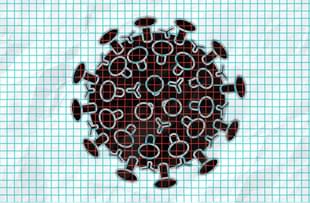Economy
India Has Proved World Wrong On Covid; Case For Fully Opening Up Economy Has Never Been Stronger
R Jagannathan
Aug 25, 2020, 12:48 PM | Updated Aug 26, 2020, 09:01 AM IST
Save & read from anywhere!
Bookmark stories for easy access on any device or the Swarajya app.


When the definitive work on how Indian states fared against Covid-19 is compiled a year or two from now, Karnataka surely will feature among the top performers. The main reason for this is not because the total number of infections has been low, but because the state has struck the right balance – even at some risk of going wrong – between livelihoods and lives.
Under Chief Minister B S Yediyurappa, who himself has been a victim of Covid-19, the state long ago decided that throttling the economy was not the right answer to dealing with an infectious virus.
On Monday, 24 August, the state announced the lifting of almost all restrictions on economic activity and inter-district and inter-state movement. Public transport has been moving freely for some months now, though with few passengers, and Metro services may well resume on 1 September. Pubs and bars could also reopen with strict protocols, though question-marks remain over whether schools and multiplexes will be given the go-ahead to open shutters.
The state, despite nearing the 300,000-mark (actual number: 283,665) for Covid-19 cases, has calculated that the worst is over, with recoveries just under 70 per cent, and mortality rates at a reasonable 1.6 per cent.
Clearly, Karnataka is signalling the way ahead for India, where Covid-19 cases now top 3.16 million and fatality rates are below 2 per cent. India, barring a few pockets, has to open up for business in September. What is true for Karnataka may be true for India too.
To be sure, total cases are likely to shoot up once again as more people start moving around, but the signals are looking good either way. Consider:
One, Covid-19 testing is rapidly being scaled up to nearly a million a day, which means municipal authorities can quickly help those in need.
Two, assuming four asymptomatic cases for every one detected, the mortality rate will actually be well under 1 per cent, possibly less than 0.5 per cent.
Three, on 25 August, daily increases in Covid-19 cases fell below 2 per cent for the first time in several months (at 1.96 per cent), a far cry from the 4 per cent-plus levels in May, 3 per cent-plus in June and July, and less than 3 per cent for most of August so far. With daily active cases growth now well below 1 per cent, we are likely to see the Covid-19 scare ease up over the next three months, despite the reopening of the economy.
Four, on a population-adjusted basis, India is actually doing much better than Germany (widely seen as among the best performers against Covid-19 in Europe), both on total cases and mortality. At last count, Germany had a Covid-19 figure of 236,118 with 9,336 fatalities. With 16 times Germany’s population, and a much poorer health infrastructure and state capacity, India’s current Covid-19 count could easily have been 3.7 million, but is actually much lower at 3.16 million. The death count could have been 1.5 lakh, but is actually at 58,390. Even accounting for some undercounting for Covid-19 deaths, this is good performance.
Five, sero surveys in some major cities suggest that the wider population has produced enough auto-immune responses to ward off the disease. In Mumbai, 57 per cent of slum-dwellers and 16 per cent of people living in housing societies had developed antibodies for Covid-19. In Delhi, the figure was just under 30 per cent, and in Ahmedabad just over 17 per cent.
This does not indicate any kind of actual herd immunity at the national level, but it does mean that significant pockets are moving in that direction.
The case for locking up India is non-existent. This does not mean Covid-19 has peaked – it could still reach levels of upto 10 million over the coming months – but as long as active cases growth is declining and trending towards zero, the health infrastructure is capable of handling it.
And yes, it may be time for the Finance Minister to trot out a well-timed economic demand stimulus in October-November.
Jagannathan is former Editorial Director, Swarajya. He tweets at @TheJaggi.





